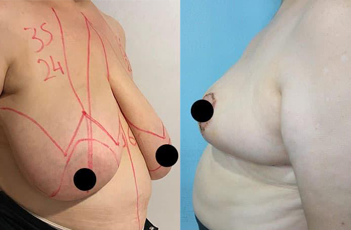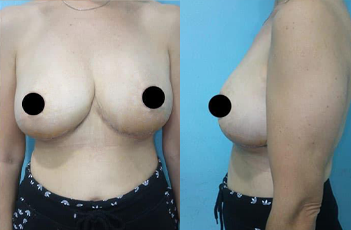
What is Breast Reduction? An Aesthetic Method for Physical and Psychological Relief
Breast reduction surgery is a surgical procedure performed to eliminate the physical and psychological discomfort caused by excessively large breasts. In this procedure, excess breast tissue and skin are removed to reduce the size of the breasts.
What is Breast Reduction Surgery?
Breast reduction surgery is a procedure that aims to surgically reduce breast size in women. Excessive breast size can cause back, neck, and shoulder pain, skin irritation, and itching. It can also limit physical activities and lower self-confidence. Breast reduction surgery addresses these problems and ensures smaller, more proportionate breasts.
How is Breast Reduction Surgery Performed?
The method of surgery may vary depending on the patient’s breast structure and expectations. Generally, incisions are made around the areola, under the breast fold, and sometimes within the breast tissue to remove excess tissue.
After removing the breast tissue, the breast is reshaped and the nipple is repositioned. Stitches usually dissolve on their own, so they do not need to be removed.
Why is Breast Reduction Surgery Performed?
Breast reduction surgery is performed to eliminate physical discomfort caused by excessively large breasts. Large breasts may lead to neck, shoulder, and back pain, skin irritation, and even aesthetic problems such as deep strap marks. They may also limit sports activities and make finding suitable clothing difficult. Breast reduction surgery aims to reduce breast size to relieve these problems.
Will There Be Scars After Breast Reduction Surgery?
Scars are a normal outcome after breast reduction surgery. However, surgical techniques and suture materials can minimize their size and appearance.
During surgery, excess tissue and skin are removed, and stitches are placed to reshape the breast. The scars are usually located under the breast, around the areola, and under the breast fold. Their size and appearance may vary depending on the technique, personal factors (skin type, healing process, etc.), and the surgeon’s experience.
The healing process of scars usually takes around 1 year. Over time, scars become less visible and blend with skin tone. Following your surgeon’s recommended scar care methods can make them less noticeable.
Are Non-Surgical Breast Reduction Solutions Possible?
Non-surgical breast reduction solutions are generally not very effective. Some women may try exercises or reduction corsets, but these usually provide limited results. In some cases, liposuction or laser treatments may be used, but surgery is usually necessary for a real reduction of breast tissue.
Who is Suitable for Breast Reduction Surgery?
Breast reduction surgery is suitable for women experiencing physical or psychological discomfort due to large breasts. Common candidates include those suffering from neck and back pain, poor posture, skin irritation, limited mobility, difficulty in sports, social withdrawal, clothing problems, and lack of confidence. However, it is essential to undergo a doctor’s evaluation before surgery.
Can Breast Reduction and Breast Lift Be Performed Together?
Yes, breast reduction and breast lift can be performed at the same time. In cases of sagging tissue, both procedures can be combined in one operation, resulting in smaller and lifted breasts. However, this depends on the surgeon’s evaluation.
How to Determine the Right Breast Size and Shape?
There is no universal standard for breast size or shape. Some people prefer to change their breast size for comfort or aesthetics. The right size and shape vary from person to person, depending on body structure, lifestyle, and preferences.
Measurements such as breast base width, nipple height, breast volume, as well as imaging tests (mammography, ultrasound, MRI), or even digital 3D simulations can be used. A detailed consultation with your surgeon is essential to determine the most suitable plan.
What Are the Risks of Breast Reduction Surgery?
Like any surgery, breast reduction carries potential risks and complications, though rare. These may include anesthesia complications, bleeding, delayed wound healing, infection, fluid buildup, breast asymmetry, numbness, loss of nipple sensation, scar tissue, or permanent scars. Smokers carry a higher risk of complications, so it is important to follow medical advice before and after surgery.
FREQUENTLY ASKED QUESTIONS
About the Author
Prof. Dr. Osman Kelahmetoğlu
Specialist in Plastic, Reconstructive and Aesthetic Surgery
This article was prepared by Prof. Dr. Osman Kelahmetoğlu based on scientific sources and clinical experience. For more information or to schedule an appointment, please get in touch.
Contact: iletisim@osmankelahmetoglu.com – +90 (533) 351 76 37


